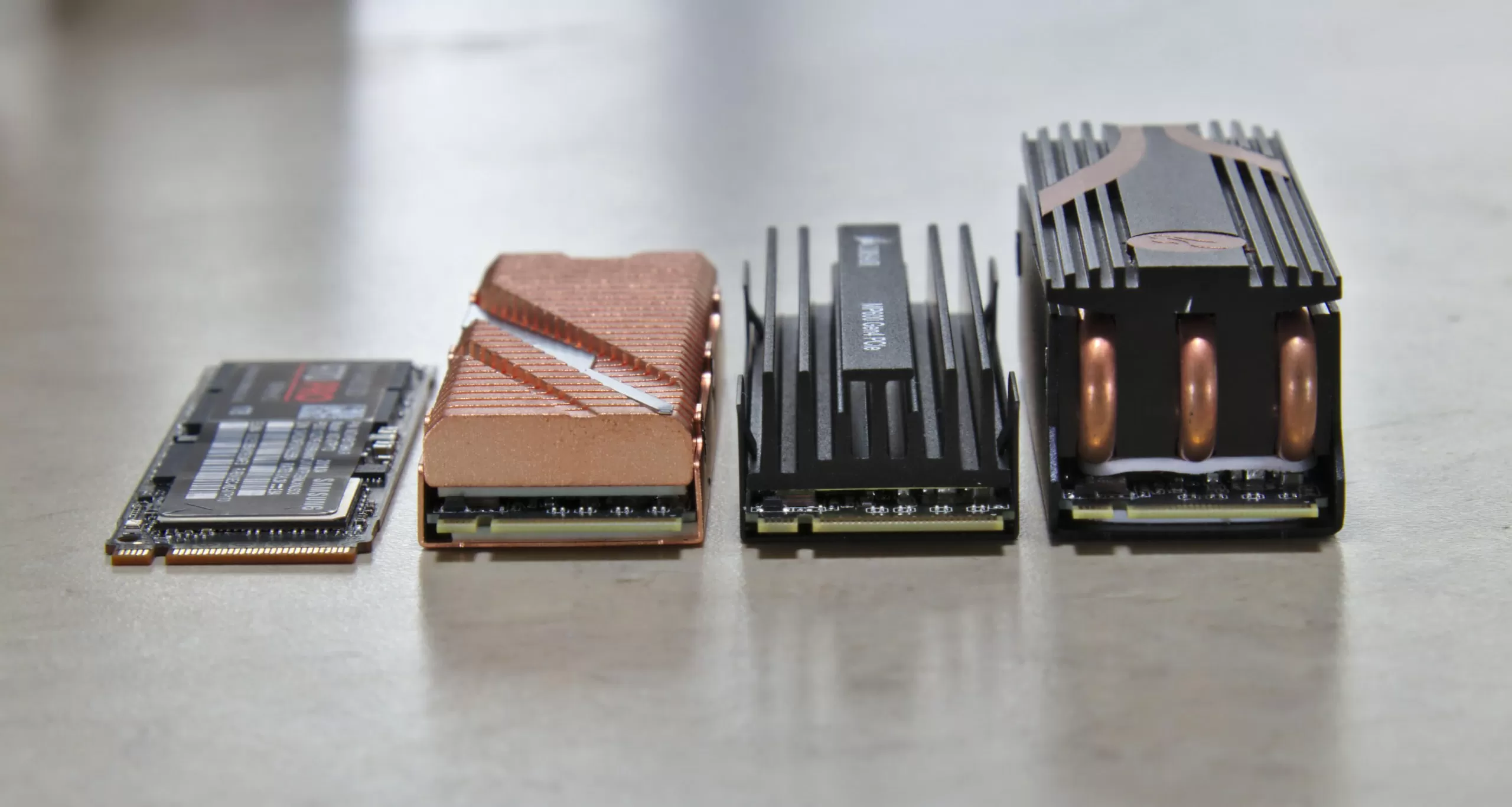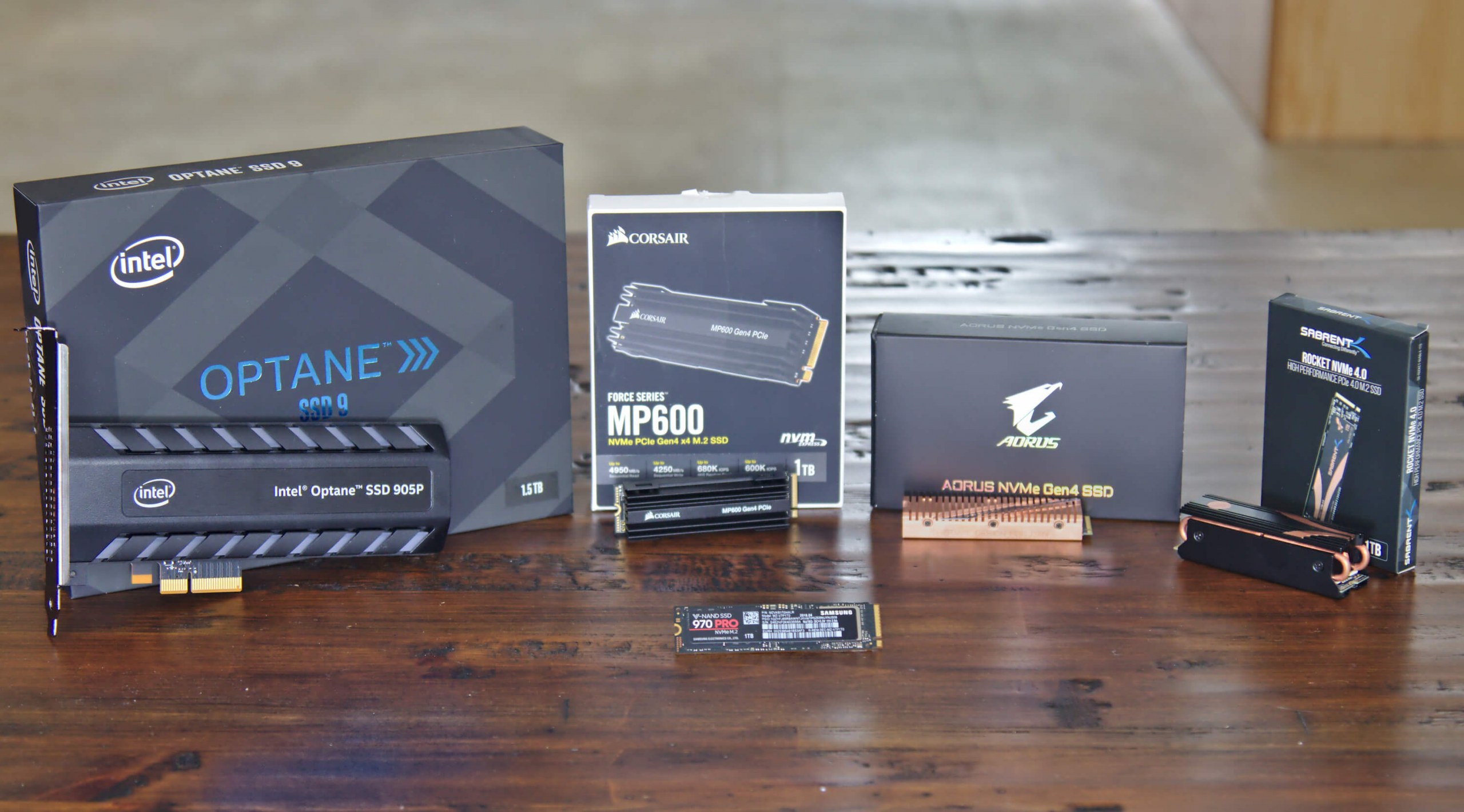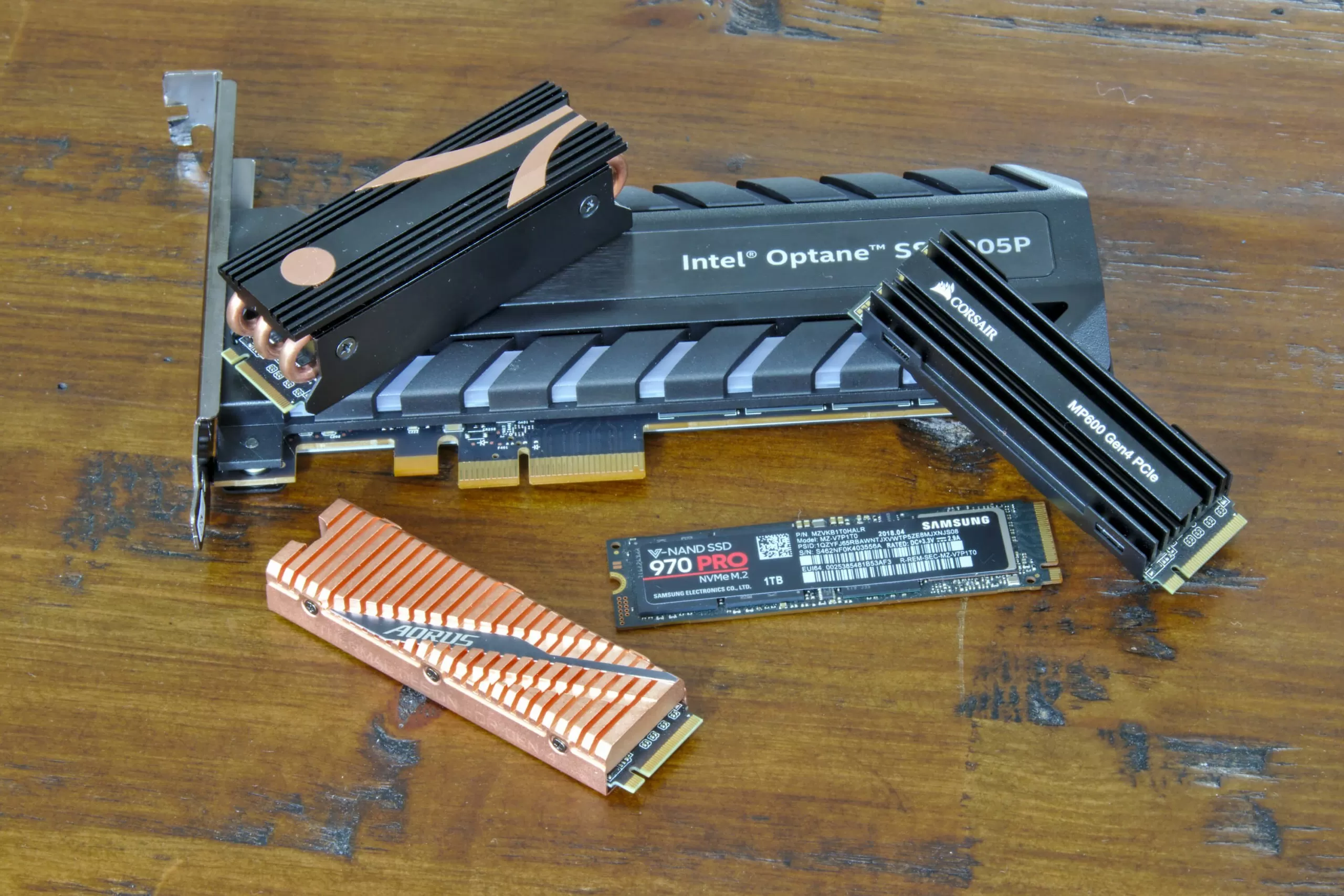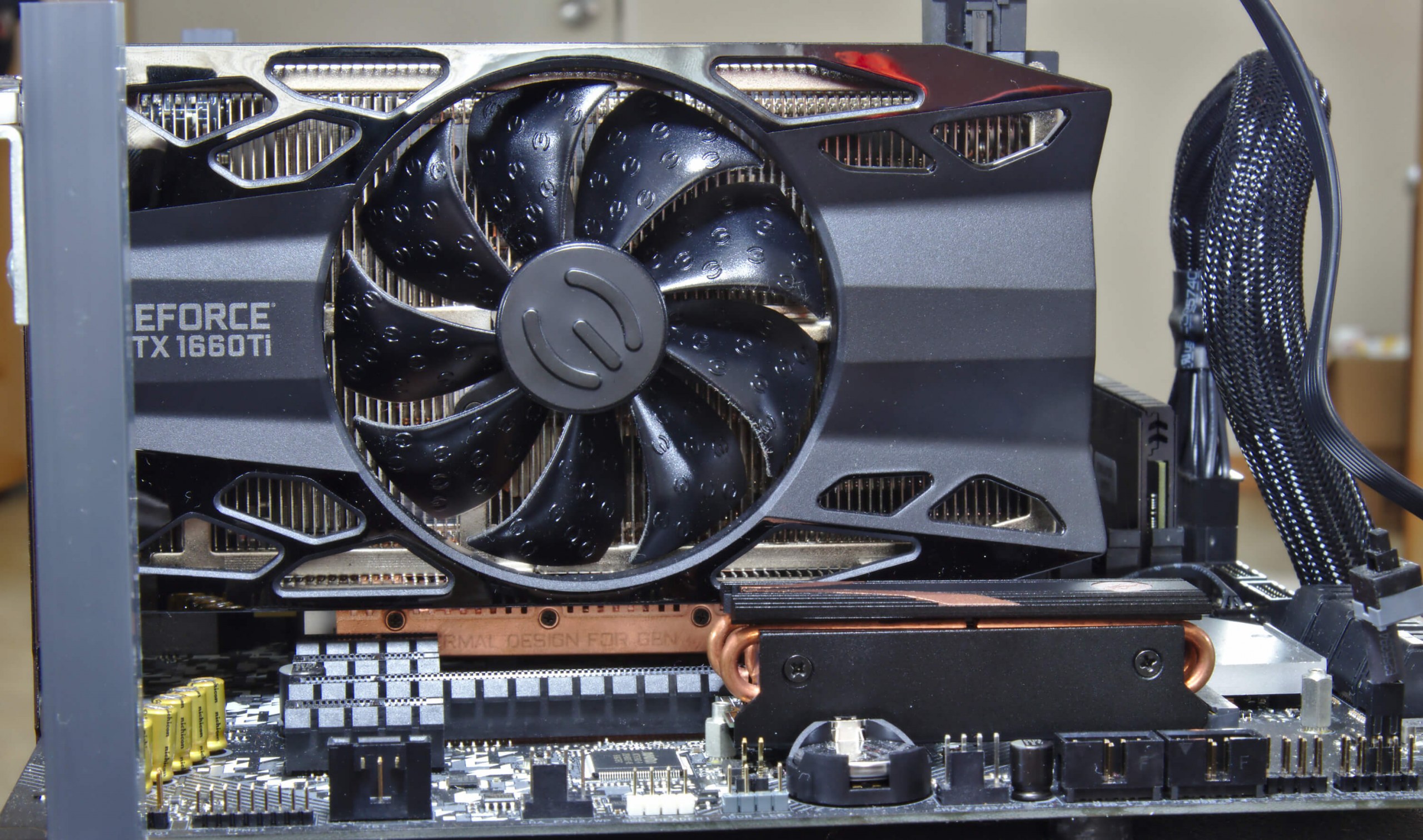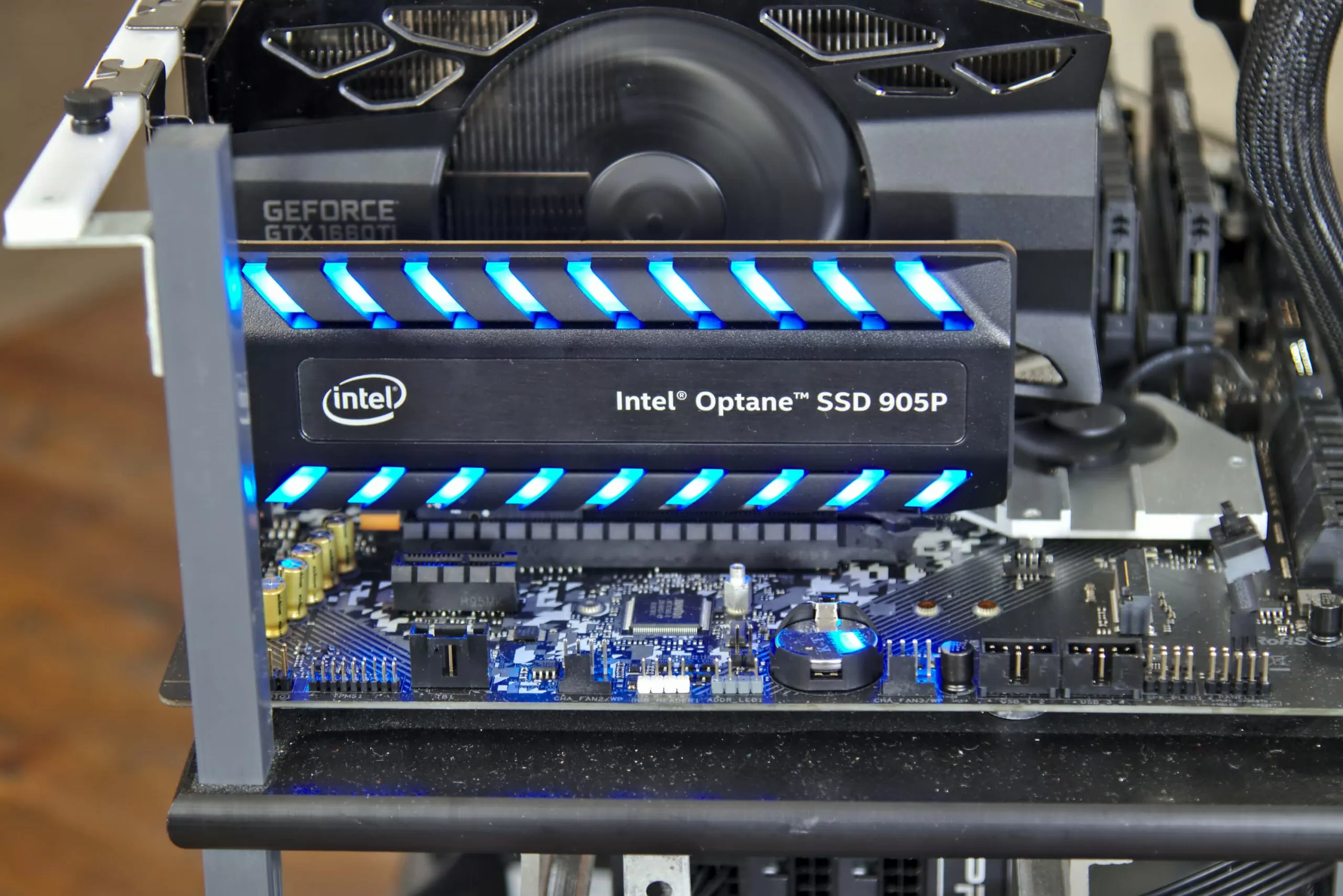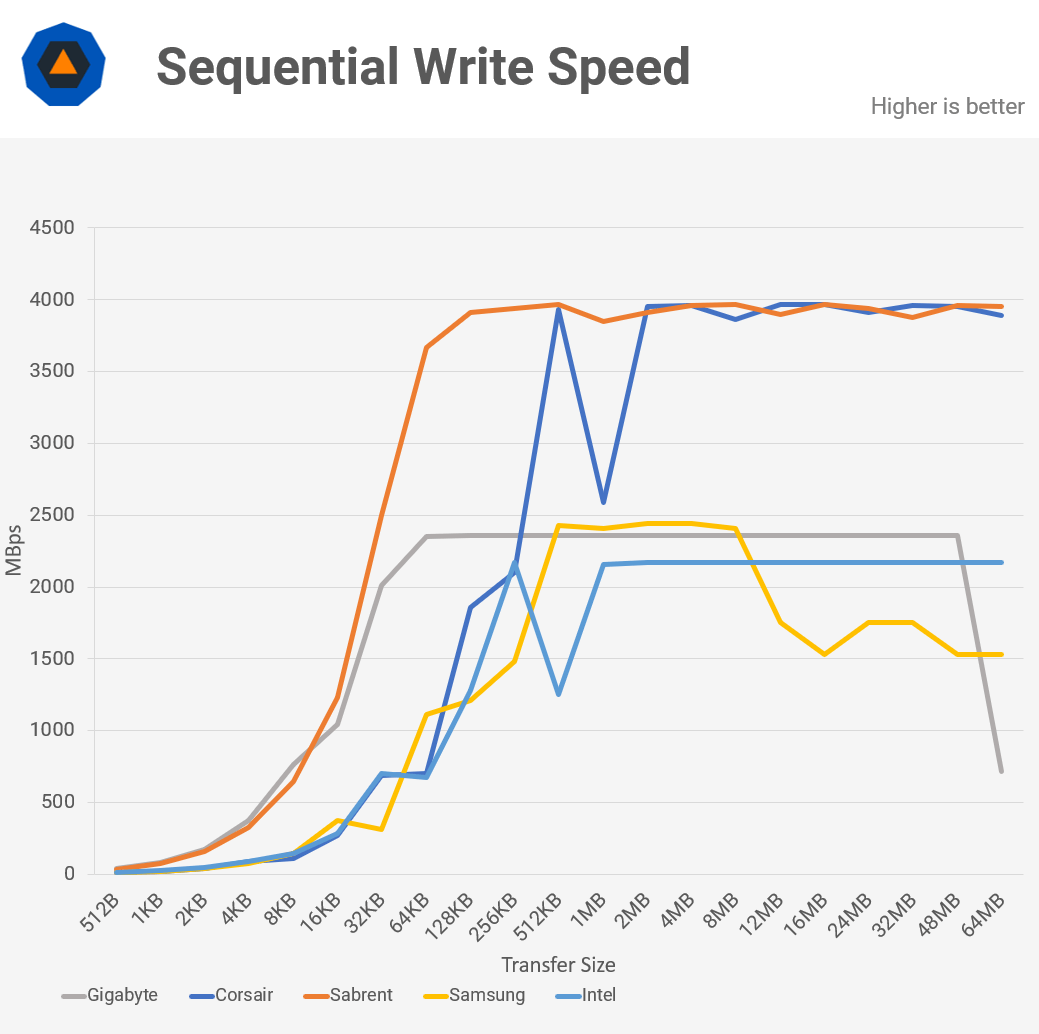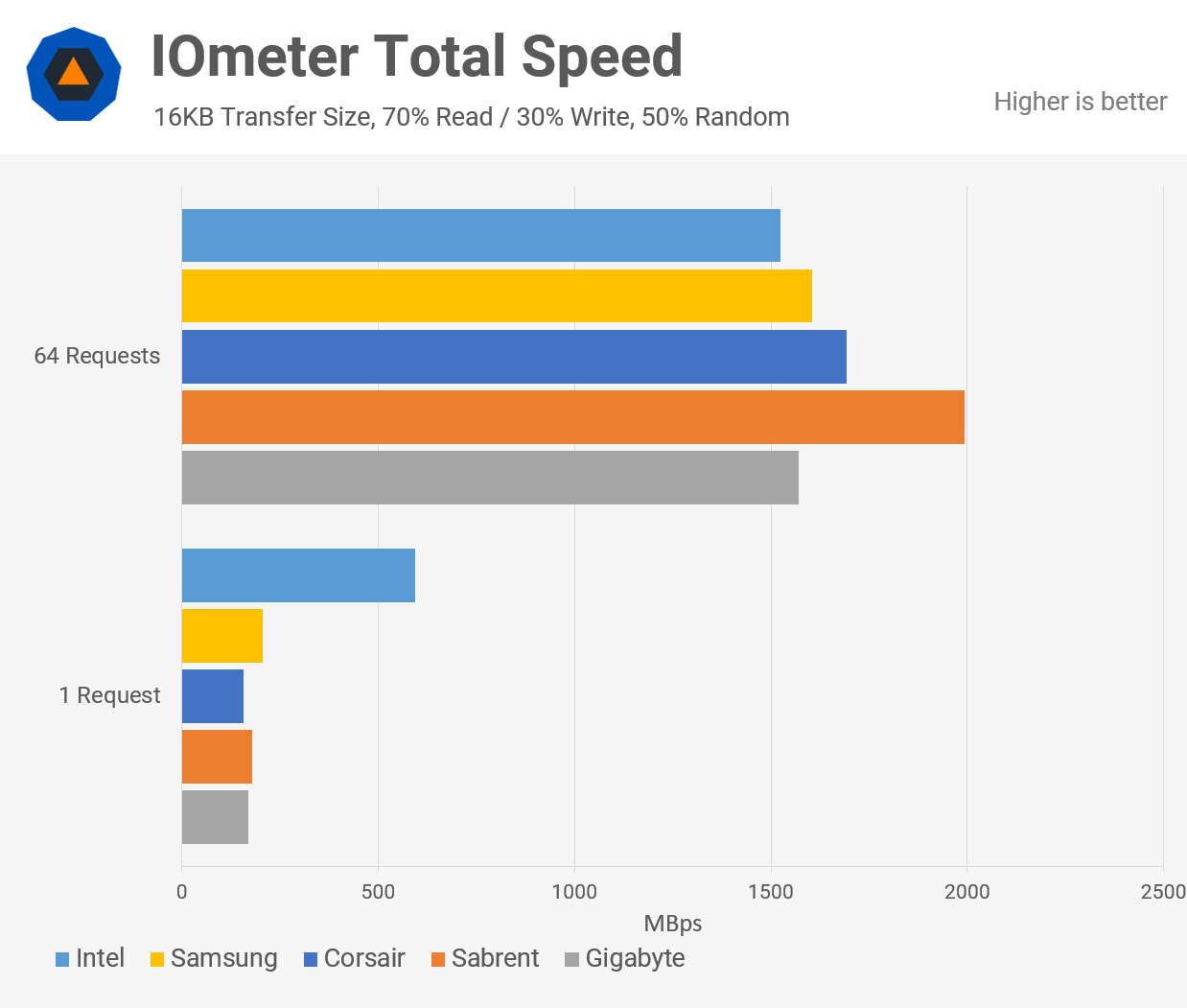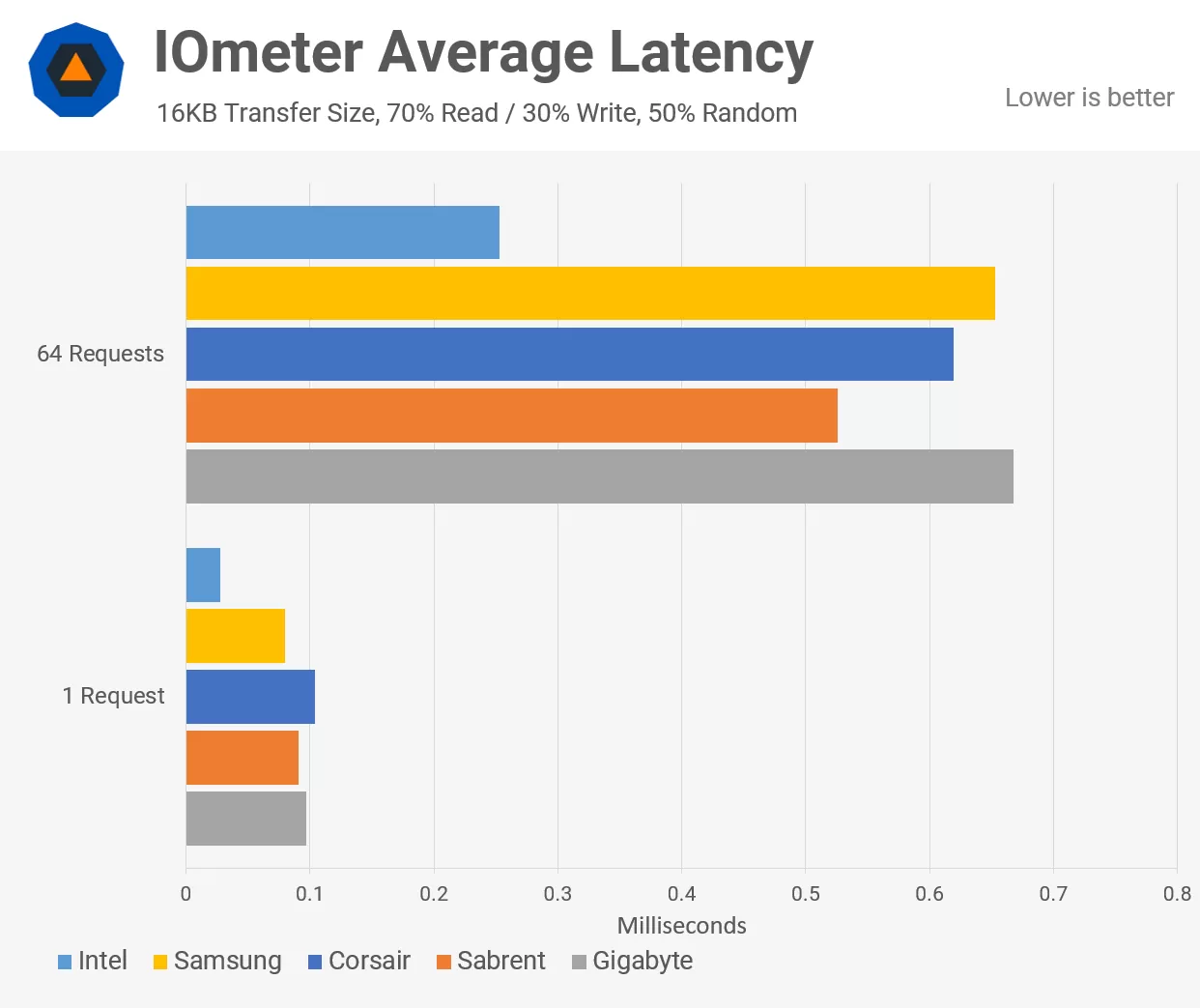High performance storage is in transition as the industry is beginning to adopt the PCIe 4.0 standard. For now, the biggest change consumers will see is even faster NVMe SSDs on offer. This comes as a result of PCIe 4.0 providing double the data rate of the PCIe 3.0 standard. Previous gen SSDs had max speeds of up to 3500MB/s, while the new generation claims speeds up to 5000MB/s.
Today, we'll be putting several new drives to the test and comparing them to two of the fastest PCIe 3.0 drives you can buy. Looking at the spec sheet you will quickly notice higher throughput numbers, but what does that translate to for the average power user? Let's find out.
It should be noted that the first mainstream platform to adopt PCIe 4.0 is AMD's new flagship X570 platform that launched along with third-gen Ryzen processors a few months ago. The X570 platform is aimed at the high performance premium segment as it enables a number for forward looking technologies not limited to PCIe 4.0 but also M.2 Gen 4 storage, the latest USB 3.2 Gen 2 standard, and in some cases, Wi-Fi 6 and 10 GbE connectivity.
In this roundup, we'll be taking a look at the new Corsair MP600, Sabrent Rocket and Gigabyte Aorus SSDs, all new PCIe NVMe 4.0 drives. We have pitted them against the excellent Samsung 970 Pro SSD and Intel's top of the line Optane SSD 905P. Be sure to also check out our roundup from last year which includes several other PCIe 3.0 drives.
As you can see on the table below, the new drives are actually a bit more affordable than the year-old Gen 3 SSD 970 Pro (this is the prosumer version of the more affordable SSD 970 Evo). The Optane drive is a bit of an outlier since the technology is still developing and it's more of an enterprise drive. Besides the 970 Pro, you can currently pick up a Gen 3 1TB NVMe SSD for around $150-200 depending on the model. This puts the price premium at about 30% between Gen 3 and Gen 4.
The Contenders
| Product | Price | Cost / GB ($) | Interface | Capacity* | Max Read (MB/s) | Max Write (MB/s) |
| Corsair MP600 | $200 | 0.20 | PCIe 4.0 | 1TB | 4950 | 4250 |
| Sabrent Rocket | $200 | 0.20 | PCIe 4.0 | 1TB | 5000 | 4400 |
| Gigabyte Aorus | $160 | 0.32 | PCIe 4.0 | 500GB | 5000 | 2500 |
| Intel Optane SSD 905P | $2,100 | 1.40 | PCIe 3.0 | 1.5TB | 2600 | 2200 |
| Samsung 970 Pro | $300 | 0.30 | PCIe 3.0 | 1TB | 3500 | 2700 |
As with previous generations, the 4.0 standard simply doubles the speed that the PCIe slot runs at. It now provides about 2GB/s per lane compared to the 1GB/s per lane of PCIe 3.0. The PCIe 4.0 standard was delayed for about two years which means that the PCIe 5.0 standard is scheduled to be out in about a year or so. For today's test we used Asrock's X570 Steel Legend motherboard powered by a Ryzen 7 3700X CPU.
The three PCIe 4.0 drives we received for review are actually very similar internally. All are based on the Phison PS5016 controller, all use Toshiba BiCS4 TLC NAND Flash, and all have an on-board SK Hynix DDR4 cache. Beyond this, there's not much to differentiate the drives besides their firmware – which still an essential part of the equation. Keep in mind that as with other SSD series, the higher capacity drives will have higher rated speeds. All models from Corsair, Sabrent and Gigabyte come in 500GB, 1TB, and 2TB versions but only the 1TB and 2TB variants reach the full speed. The write speed drops to 2500MB/s on a 500GB drive compared to the 1TB or 2TB version of the same product family.
The most striking difference between these drives and those from the previous generation are the huge heatsinks. The new controllers and NAND chips run hot, so to avoid damaging them, the manufacturers have strapped on some very beefy heatsinks.
The Sabrent unit even has 6 internal heat pipes. This is the first time we've ever seen integrated heatpipes on an SSD. The Gigabyte unit is encased in a hefty chunk of copper which makes it feel really solid and well built. The Corsair drive has several vertical fins made of what feels like aluminum. Despite being taller than the Gigabyte drive, it actually weighs much less.
Just like with CPUs and GPUs, thermal management is very important on high performance SSDs. Prolonged exposure to high temperatures and inadequate cooling can damage the drives. If you try to remove the heatsinks, the drives will thermal throttle very quickly. Even with the heatsinks on, the drives may still throttle if they are under sustained load for more than about 15 minutes.
Before we go into performance, we need to go over clearance issues with these drives. Since they are so tall, the Corsair and Sabrent drives won't fit in most NVMe slots if you have another PCIe card on top. Most modern motherboards have two NVMe slots in-between their PCIe slots, and this may be an issue depending on your setup.
If you have a single GPU and no other expansion cards, you should be fine with using the lower NVMe slot. If you need to use those PCIe slots, the Gigabyte drive will be your only option since it is thin enough to fit under a GPU.
For motherboards with integrated chipset and NVMe heatsinks, you'll likely have to remove that to get the drive to fit. This was an issue for us on the X570 Steel Legend. We think the better option, if you're confident in your motherboard's cooling capacity, would be to remove the heatsink from the SSD and use the motherboard's integrated one.
The Optane 905P is kind of a different beast. Coming in at over $2,000, it's almost an order of magnitude more expensive than the other drives in this roundup. The previous generation, SSD 900P, was overall the fastest drive we tested in last year's roundup. The 905P is an incremental upgrade with some slight performance improvements. Optane technology is designed to bridge the gap between fast RAM and large traditional mass storage, it won't give the fastest raw reads and writes, but is instead aimed at improving overall system performance and responsiveness. It is especially good at small, random file accesses like those found in data analytics and high performance computing.
Surprisingly, Samsung does not currently have a Gen 4 SSD on the market (they just announced an enterprise bound drive last week). As with previous launches, they're expected to release enterprise hardware first and then consumers will see similar technology trickle down in the following months.
Performance
We'll move on to performance tests now, starting with synthetics. The first test is for raw sequential performance. This shows the absolute fastest the drive can go given a perfect scenario. By testing with different transfer sizes, we can see how the drives perform with different types of files.
The results are a bit all over the place, so let's break them down. Starting with the read performance, all three PCIe 4.0 drives are equivalent at the top of the chart. Since they have the same controller and NAND, this is what we'd expect. The 970 Pro is next, although we see a sharp drop off as the file size increases. The Optane drive is the slowest here since raw sequential performance is not its priority.
Write speeds are a tad messier. The Sabrent and Corsair drives both reached the highest speed of just under 4GBps, but the Corsair drive took longer to get there and had a dropoff in the middle.
The Sabrent Rocket 4 drive was much faster to the top and stable once it maxed out. Since we have the 500GB version of the Gigabyte Aorus drive, it is limited to 2400MB/s. The 1TB and 2TB versions of the Aorus line aren't limited and should be closer in performance to its competitors and vice versa, in the case of Sabrent and Corsair's 500GB drives, so don't look into this too much. The Samsung and Intel drives finish in the same order as with the read test.
Next we'll go to IOmeter which is a great all-around storage benchmarking utility that allows for very customized tests. In most use cases, drive reads happen much more frequently than drive writes. Data accesses are also a mix of random and sequential. To cover the most common scenarios, we ran with a 16KB transfer size, 70% read / 30% write, and 50% random. The tests were ran twice: with a single request and a queue of 64 requests. This measurement is called Queue-Depth. Sporadic use such as during web browsing or light desktop applications is likely to have a low queue-depth. On the other hand, heavy use like content creation or other data-intensive tasks will have a higher queue depth since there are more drive accesses waiting to be processed.
Starting with total transfer speed, the Intel Optane runs away at the lower queue-depth. This is expected since the drive is designed for tasks exactly like this. Moving up to 64, the Optane drive's low sequential performance starts to hurt it. The Sabrent drive is the clear winner here and is about 500MB/s faster than the competition. Surprisingly, the PCIe 3.0 Samsung 970 Pro drive is right in it with the PCIe 4.0 drives. The extra bandwidth from Gen 3 to Gen 4 doesn't make a difference here at all here.
In addition to speed, latency is also extremely important when measuring drive performance. The Optane drive excels here since one of its main features is fast access times. Second place again goes to the Sabrent drive. Besides that, the rest of the drives are very close and see no benefit from the new standard.
Next up we'll go to real-world benchmarks. The first test is PCMark 8's Storage Benchmark which is comprised of several storage access traces from common applications. Although it looks like a synthetic test, from the drive's perspective, it sees read and write requests identically as if the user was using the real programs. These include Microsoft Office, some video games, and Adobe Photoshop. The Intel Optane drive wins handily since it is designed for productivity and fast accesses. The rest of the drives are very close although we'll give the slight edge to the Samsung 970 Pro. Raw sequential read and write speeds aren't as important here since typical file usage comes in short bursts of small files.
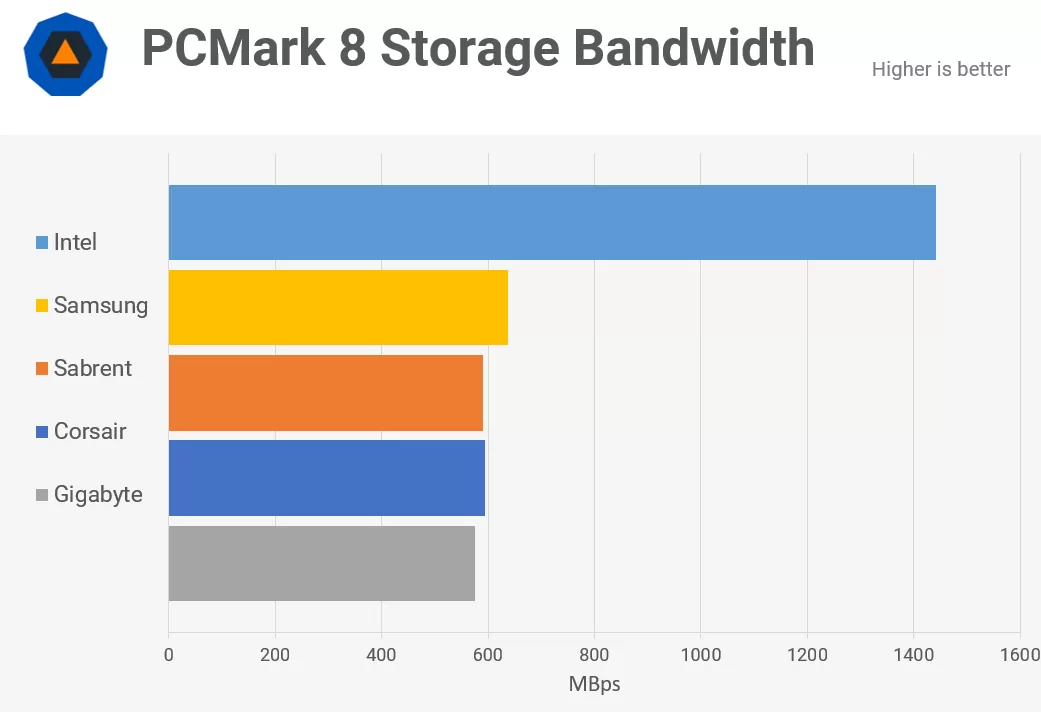
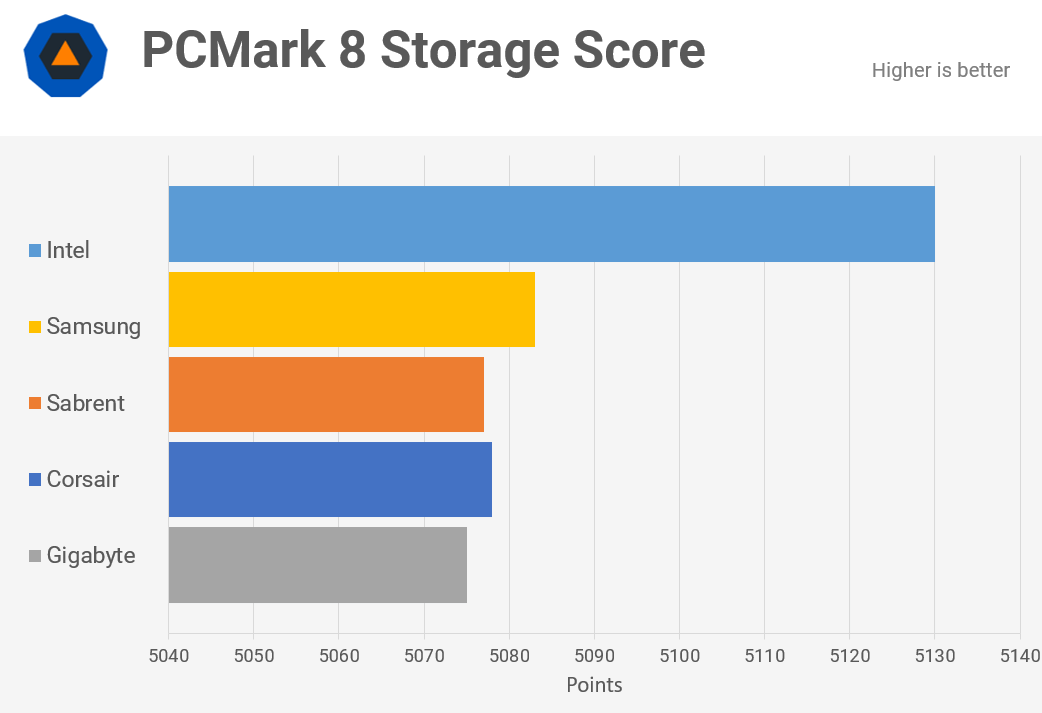
Next we'll explicitly look at game load times for Counter-Strike: Global Offensive and Shadow of the Tomb Raider. The results were all within about 2 seconds so you'll likely never notice a difference. The Samsung drive manages to slightly edge out the competition thanks to Samsung's great firmware and drive management. Second place goes to the Sabrent drive.
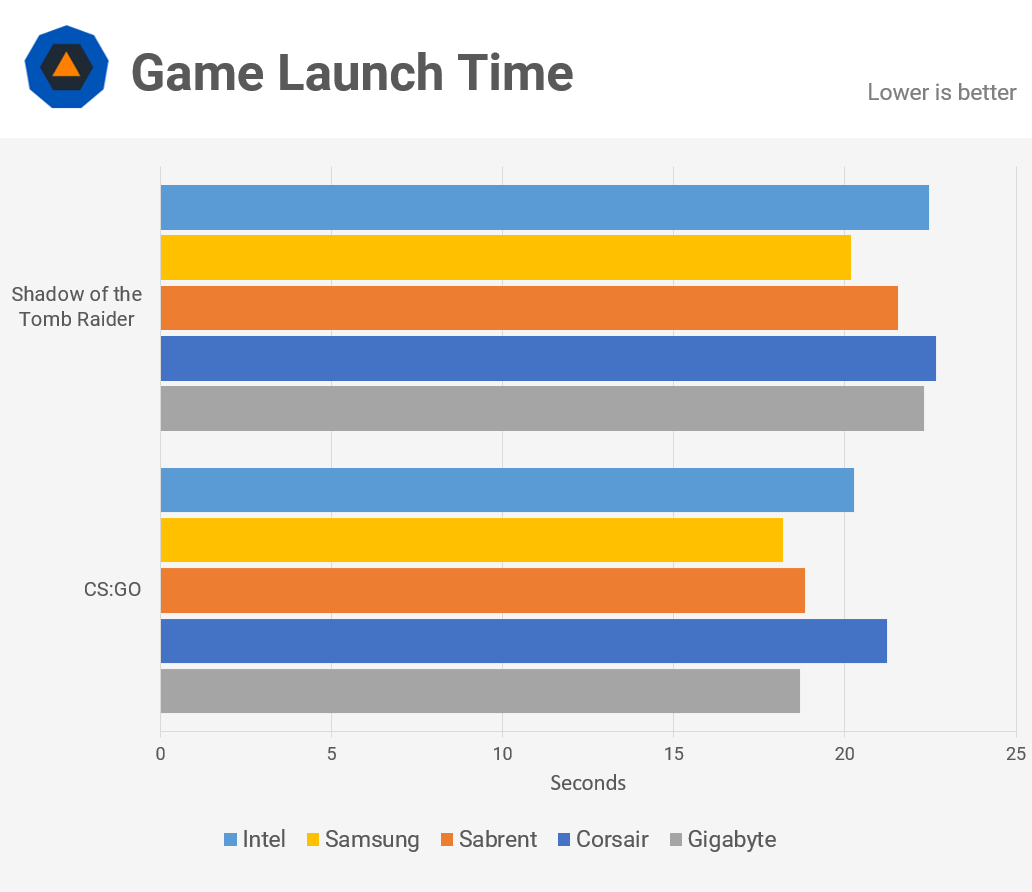
The last tests we'll look at are file copy and Windows boot times. Besides gaming and productivity, this is the other way a drive is likely to be used and commonly measured. Both file copies were about 20GB in size. The large test was comprised of about 20 separate 1GB files and the small test had about 20,000 files.
Even though both tests transferred roughly the same amount of data, the smaller test took much longer due to the increased overhead in processing each file. The Sabrent drive is the winner here with the Gigabyte and Intel drives coming in a close second.
The Samsung and Corsair drives were a tad behind with the small file copies. This may be due to internal caches filling up but it's hard to say for sure. Windows 10 boot time is the closest of them all. All drives were within 1 second of each other, so you'll never notice the difference.
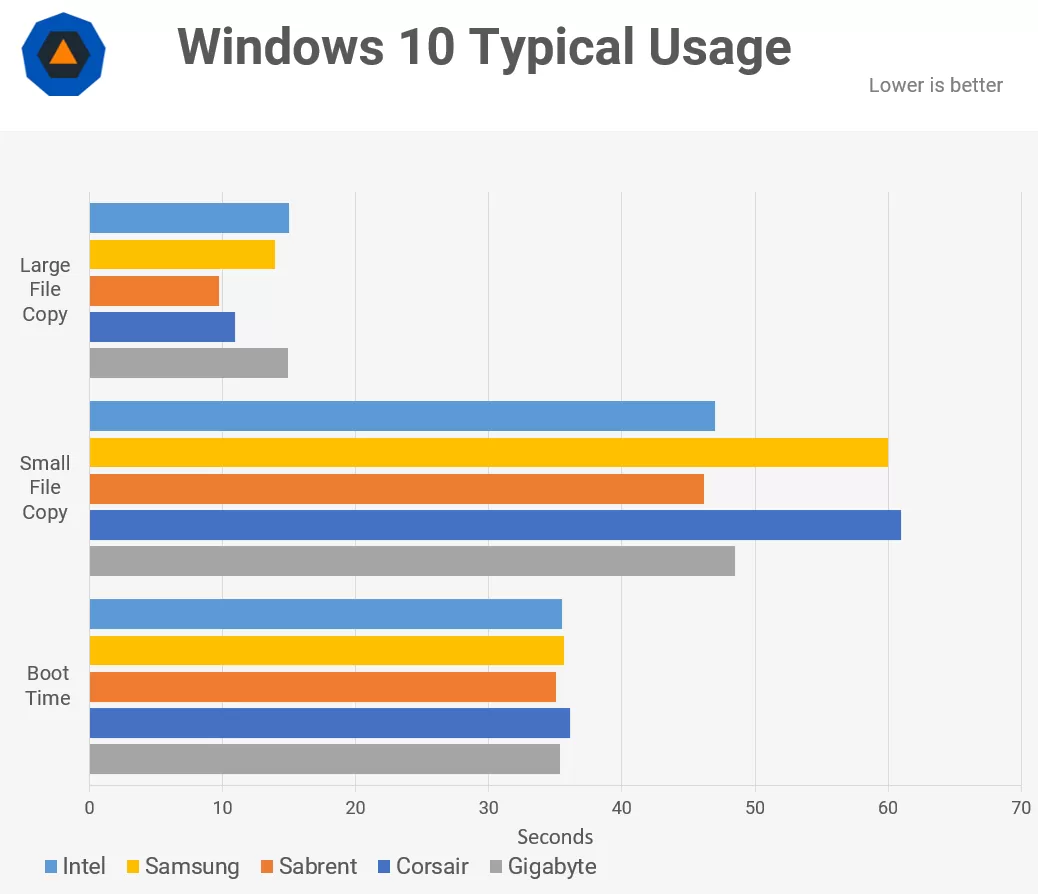
Wrap Up
Looking at the cream of the storage crop, the results were about what we expected. The Optane drive is the king of productivity, but you pay for it and it's not really meant for consumers. It will cost you more than two RTX 2080 Super GPUs if you know what I mean.
However, it should be highlighted how relatively close these drives are when it comes to running mainstream applications. The throughput offered by top-of-the-line NVMe SSDs that will cost you around $200 for 1TB of storage is impressive and far from the arm and leg that we used to pay for these only a few short years ago.
The three PCIe 4.0 drives were close in most tests with the Sabrent Rocket 4 winning by a slim margin. The Samsung 970 Pro still performs very well and even won in our game launch tests. This makes it clear that there isn't much of an advantage to getting a Gen 4 SSD if you already have a fast Gen 3 SSD. Compared to more of the mainstream, commodity Gen 3 drives, the Gen 4 drives will give you a performance boost in very select workloads.
If you are building a new high end PC and have the budget, we definitely recommend going for a fast NVMe PCIe drive. Samsung's Evo line used to get our top recommendation, but Sabrent's Rocket Gen 4 SSD is definitely worthy of your consideration. If you don't do content creation or other data-intensive work, there won't be much benefit, though down the road there may be some scenarios that can take advantage of the full 5GB/s speed. Much of the Gen 4 SSD launch is marketing hype, but it's true that the drives are objectively faster, so it's always great to see technology progress.
